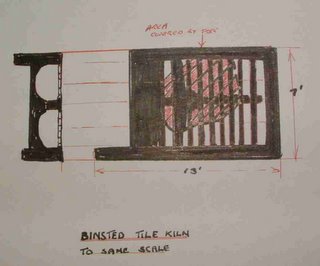Patching update.
The results of the four day excavation is so far inconclusive, most of the material being uncovered is of the late 19th century to mid 20th century, and mostly house foundations and garden features.
There are two more days of excavations; if there is any material from early dates then it may turn up over theses two days. A interim report will be posted here later.
Binsted.
This year further work will be carried out on the kiln site; this will take place in late August for a two-week period.
Over the past year, research into the kiln that Con Ainsworth excavated in the 1960s, has been undertaken, and a lot of material has been unearthed.
From this material it may be possible to get the precise location of his kiln site, this is important as it will help us understand our later kiln site.We know it was under the willow tree, and north is shown on drawings, and an Aerial photo when blown up shows the excavation, so some survey work useing this photo will locate its precise location. Research has shown that the Littlehampton Archaeological and History Society now no longer, carried out some work on kiln sites within the area of Binsted, but the information is sketchy, this may well be how Con Ainsworth new about the site that he excavated.
More information is on Binsted web site.

Picture of Binsted kiln 1965-6 artist not known, found in arcives at Worthing museum.
http://binsted.mysite.wanadoo-members.co.uk
